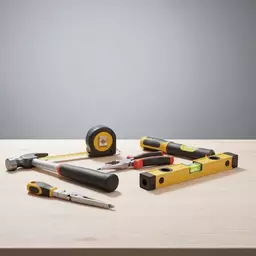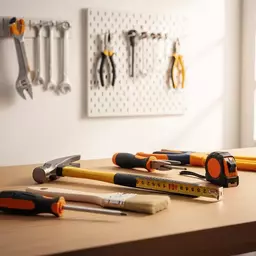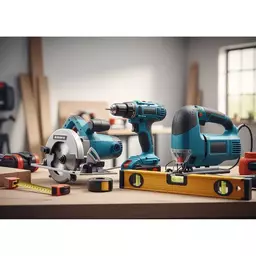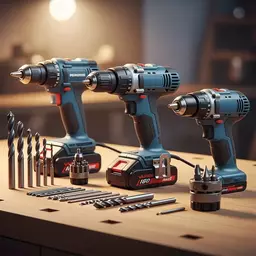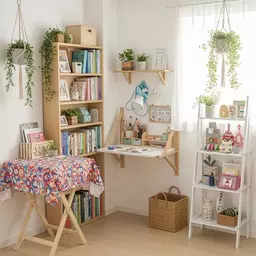Build Your Own Outdoor Furniture

Building outdoor furniture is not just about creating functional pieces; it’s an opportunity for personal expression and creativity! Have you ever thought about how a uniquely crafted bench or table could transform your backyard into a beautiful oasis? Embracing DIY projects allows you to not only save money but also develop invaluable skills while enjoying the satisfaction of seeing your vision come to life.
What You Will Learn
- Customization: Create outdoor furniture tailored to your unique style and preferences, ensuring it fits perfectly in your space.
- Quality Control: Gain complete control over the materials and construction techniques to enhance durability and aesthetics.
- Cost-Effectiveness: Learn how building your own furniture can often cost less than purchasing similar items from stores.
- Advanced Finishing Techniques: Discover methods to protect your furniture from weathering, ensuring longevity and beauty.
- Sustainable Practices: Incorporate eco-friendly materials and upcycling techniques to make environmentally conscious choices.
- Multimedia Resources: Utilize video tutorials and checklists to enhance your DIY experience and boost your confidence.
- Engagement with DIY Communities: Connect with online forums, blogs, and social media groups to share your projects and gain inspiration.
Key Benefits of Building Your Own Outdoor Furniture
Explore the notable advantages of DIY outdoor furniture projects below. For more comprehensive guidance on home improvements, check out these DIY home renovation tips.
Cost-Effective
Building your own pieces often costs less than purchasing them from stores, allowing for budget-friendly projects.
Durability
By selecting quality materials, your furniture can withstand the elements better, ensuring longevity.
Unique Designs
You can create pieces that perfectly fit your space and needs, which can be hard to find in stores.
Skill Development
Tackling these projects enhances your DIY skills, boosting your confidence for future endeavors.
Understanding the Basics of Outdoor Furniture Construction
Building outdoor furniture can seem like a daunting task, but it opens up a world of possibilities for creativity and personal expression! Whether you want a cozy spot to relax or a stylish place to entertain guests, understanding the basics of outdoor furniture construction is essential. With the right knowledge and materials, you can transform your backyard into a welcoming haven.
Many people overlook the importance of DIY outdoor furniture for their space. Not only does it enhance the aesthetic appeal of your home, but it also allows you to customize pieces that fit your style and needs perfectly. Think about it: every time you step outside, you can enjoy the fruits of your labor and take pride in the unique pieces you've created!
Importance of DIY Outdoor Furniture for Your Space
Creating your own outdoor furniture is about more than just the finished product; it’s also about the experience! When you take on a DIY project, you get to learn new skills, and it’s incredibly rewarding to see your ideas come to life. Plus, building your own pieces can save you money compared to buying ready-made options. Consider these DIY ideas for small spaces if your outdoor area is compact.
Consider these points when diving into your outdoor furniture project:
- Customization: Tailor your furniture to match your personal style and outdoor space.
- Quality Control: You have complete control over the materials and construction methods used.
- Satisfaction: There’s nothing quite like relaxing on a piece of furniture you've built yourself!
Benefits of Building Your Own Outdoor Furniture
When you tackle outdoor furniture projects, the benefits extend beyond saving money. You'll also gain valuable skills that can help with future DIY endeavors. Each project you complete will boost your confidence and inspire you to take on more challenging tasks.
Here are some notable benefits to consider:
- Cost-Effective: Building your own pieces often costs less than purchasing them from stores.
- Durability: By selecting quality materials, your furniture can withstand the elements better.
- Unique Designs: You can create pieces that perfectly fit your space and needs, which can be hard to find in stores.
Essential Materials for Your Outdoor Furniture Projects
The materials you choose for your outdoor furniture projects play a significant role in the durability and overall look of the pieces. Selecting the right wood types is crucial for ensuring your furniture withstands the elements and lasts for years to come. Let’s explore how to make those choices!
Interactive Poll: Your Outdoor Furniture Style
What style of outdoor furniture do you prefer for your space? Share your thoughts!
Maintaining and Customizing Your DIY Outdoor Furniture
Once you've built your outdoor furniture, the journey doesn’t end there! Proper maintenance ensures your creations last through the seasons and continue to look great. Think of it as giving your furniture a little TLC, which can elevate its style and functionality. Plus, customizing your pieces can make them even more special to you and your space.
One way to enhance durability is through advanced finishing techniques. These can protect your furniture from harsh weather and UV rays. Some methods include applying multiple coats of quality sealant or using weather-resistant stains that not only preserve the wood but also add a beautiful hue.
Advanced Finishing Techniques for Enhanced Durability
To keep your outdoor furniture looking its best, consider these advanced finishing techniques:
- Use a primer: This provides a solid foundation for paint or stain, ensuring better adhesion.
- Choose high-quality finishes: Opt for outdoor-specific paints or stains designed to withstand the elements.
- Regular upkeep: Reapply finishes annually to maintain protection and appearance.
- Sand between coats: Lightly sanding can help create a smoother finish and improve adhesion.
By following these techniques, you can greatly extend the lifespan of your outdoor furniture. It’s a fantastic way to protect your hard work and enjoy your pieces for years to come!
Tips for Customizing Size and Design of Your Furniture
Customization is where your creativity can truly shine! You can modify your outdoor furniture to fit your specific needs and tastes. Whether it's making a picnic table bigger for family gatherings or adjusting the height of a chair for comfort, there are plenty of ways to personalize your projects.
- Measure your space: Take accurate measurements of the area where your furniture will sit to ensure a perfect fit.
- Incorporate unique designs: Consider adding features like built-in storage or decorative elements to enhance functionality.
- Mix materials: Combine wood with metal or fabric to create a unique aesthetic that reflects your style.
- Experiment with color: Don’t be afraid to use bold stains or paints to make a statement!
These customizations will not only make your furniture more functional but also give it a personal touch that truly makes it yours. Remember, the goal is to create pieces that you love and that fit seamlessly with your outdoor space.
Incorporating Sustainability into Your Outdoor Projects
As DIY enthusiasts, we have the opportunity to make choices that reflect our values, especially when it comes to sustainability. By opting for eco-friendly materials and practices, we can create furniture that not only looks great but is also kind to the planet.
There are so many options available that allow us to incorporate sustainability into our projects. From sourcing reclaimed wood to using non-toxic finishes, every choice makes a difference! For instance, understanding the different types of essential power tools for DIY can help you work with sustainable materials more efficiently.
Choosing Eco-Friendly Materials and Practices
Here are some eco-friendly materials and practices to consider for your outdoor furniture:
- Reclaimed wood: Using wood that has been salvaged from old buildings or furniture reduces waste and gives your pieces character.
- Non-toxic finishes: Look for paints and stains that are low in VOCs (volatile organic compounds) for a safer option.
- Composite materials: Consider using outdoor furniture made from recycled plastic or other sustainable materials.
- Native plants: If you’re incorporating plants into your outdoor space, choose native species that require less water and maintenance.
By selecting these eco-friendly options, you not only enhance your outdoor space but also contribute to a healthier environment.
Upcycling and Repurposing Materials for Sustainable Options
Upcycling can be a fantastic way to give new life to materials that might otherwise go to waste. Think about what you can create from items around your home or from local thrift stores. Not only is it budget-friendly, but it also adds a unique touch to your projects!
- Old pallets: Transform them into furniture like chairs or tables with a little creativity!
- Wooden crates: Use them as side tables or storage solutions for gardening supplies.
- Discarded furniture: Refurbish old chairs or tables to give them a fresh look.
- Repurposed fabrics: Use leftover fabric for cushions or table runners to add color and comfort.
Upcycling not only saves money but also allows you to showcase your creativity. And it’s a great conversation starter, too!
Cost Breakdown: Budgeting for Sustainable Options
When planning your outdoor projects, budgeting is essential. Here’s a simple cost breakdown to help you stay on track while incorporating sustainable options:
- Materials: Factor in costs for reclaimed wood, eco-friendly finishes, and any upcycled items.
- Tools: Consider investing in quality tools that will last for years, which can save you money in the long run.
- Labor: If you’re hiring help, include those costs in your budget, but consider DIYing to save!
- Maintenance: Allocate a budget for future upkeep and refinishing to ensure longevity.
By planning ahead, you’ll find that building sustainable outdoor furniture can be both achievable and affordable. Remember, every little effort counts! For more on selecting the right tools, consider checking out guides on choosing the right drill for repairs.
Enhancing Engagement Through Multimedia and Resources
In today’s digital age, incorporating multimedia can significantly enhance your DIY experience. Video tutorials and checklists are fantastic tools for visual learners and can simplify complex projects. Plus, they make for easy reference when you're deep into your build!
Embedding Video Tutorials for Visual Learning
Video tutorials can be a game-changer for DIYers. If you're unsure of a technique, watching someone else do it can clear up confusion. Consider these tips for finding and using video tutorials:
- Look for reputable sources: Channels dedicated to DIY and home improvement can provide reliable information.
- Follow along: Pause the video as needed to practice techniques at your own pace.
- Engage with the content: Don’t hesitate to comment or ask questions if you need clarification!
By following these tips, you can leverage video tutorials to enhance your skills and confidence in your outdoor furniture projects!
Creating a Comprehensive Materials and Tools Checklist
A materials and tools checklist is invaluable when starting a new project. It ensures you have everything you need at hand, preventing interruptions while you work. Here’s a simple framework you can use:
- Materials: List all the wood types, finishes, and any hardware you will need.
- Tools: Include all power and hand tools you’ll be using.
- Safety gear: Don’t forget gloves, goggles, and masks for protection!
Having a detailed checklist can save you time and ensure you don’t miss anything important. Plus, it’s quite satisfying to check things off as you gather your supplies!
Blogs and Resources for DIY Communities
There’s a wealth of resources available online tailored specifically for DIY enthusiasts! Blogs like Hardware Store Guide are great places to find inspiration, tips, and community engagement. Don’t hesitate to explore these resources:
- DIY blogs: These can provide step-by-step guides, project ideas, and personal experiences.
- Social media groups: Join communities where you can share your projects and ask for advice.
- YouTube channels: Look for channels dedicated to woodworking and outdoor projects.
- Online forums: Participate in discussions to learn from other DIYers and share your tips!
These resources can be a fantastic way to stay motivated and connected with other DIY enthusiasts as you embark on your outdoor projects!
Final Thoughts and Encouragement for DIY Enthusiasts
As we wrap up this guide on building and maintaining outdoor furniture, remember the key points: choose quality materials, employ advanced finishing techniques, and don’t be afraid to customize! Each project is an opportunity to express your creativity and personal style.
Building your outdoor furniture can be a fulfilling experience, so I encourage you to dive in and start creating! Share your journey on our blog or connect with us on social media—your experiences can inspire others in the DIY community. So, grab your tools, and let’s get building together!
Recap of Key Points
Here is a quick recap of the important points discussed in the article:
- DIY Outdoor Furniture: Personalize your outdoor space with custom furniture that reflects your style and needs.
- Benefits: Enjoy cost-effectiveness, durability, and the satisfaction of creating unique pieces.
- Essential Materials: Choose high-quality, weather-resistant materials for longevity and aesthetics.
- Maintenance: Regular upkeep and advanced finishing techniques are crucial for protecting your furniture from the elements.
- Customization: Tailor sizes and designs to fit your space and incorporate eco-friendly materials.
- Upcycling: Give new life to old materials to create sustainable and unique furniture.
- Resources: Utilize multimedia, checklists, and online communities for support and inspiration in your DIY journey.
Frequently Asked Questions About Building DIY Outdoor Furniture
- What are the main benefits of building my own outdoor furniture?
- Building your own outdoor furniture offers several benefits, including cost-effectiveness compared to purchasing store-bought items, the ability to create unique designs tailored to your space, enhanced durability through quality material selection, and the satisfaction of developing new DIY skills.
- What are some essential materials for outdoor furniture projects?
- Essential materials include various wood types chosen for their weather resistance and durability, such as cedar, redwood, or treated pine. Additionally, high-quality sealants, outdoor-specific paints or stains, and weather-resistant hardware are crucial for longevity.
- How can I ensure my DIY outdoor furniture lasts longer?
- To ensure longevity, focus on advanced finishing techniques like applying primers, using high-quality outdoor-specific finishes, sanding between coats for better adhesion, and performing regular upkeep such as reapplying finishes annually. Choosing durable, weather-resistant materials from the start is also key.
- Can I customize the size and design of my outdoor furniture?
- Absolutely! Customization is one of the biggest advantages of DIY. You can tailor furniture to fit exact space measurements, incorporate unique features like built-in storage, mix different materials (wood, metal, fabric), and experiment with colors to match your personal style and outdoor aesthetic.
- How can I make my outdoor furniture projects more sustainable?
- To enhance sustainability, consider using eco-friendly materials such as reclaimed wood, non-toxic finishes (low in VOCs), and composite materials made from recycled plastics. Upcycling and repurposing old items like pallets or wooden crates also significantly reduce waste and add unique character to your pieces.
